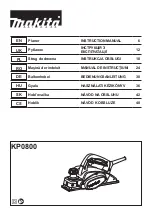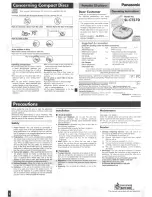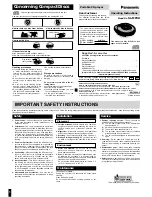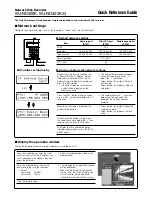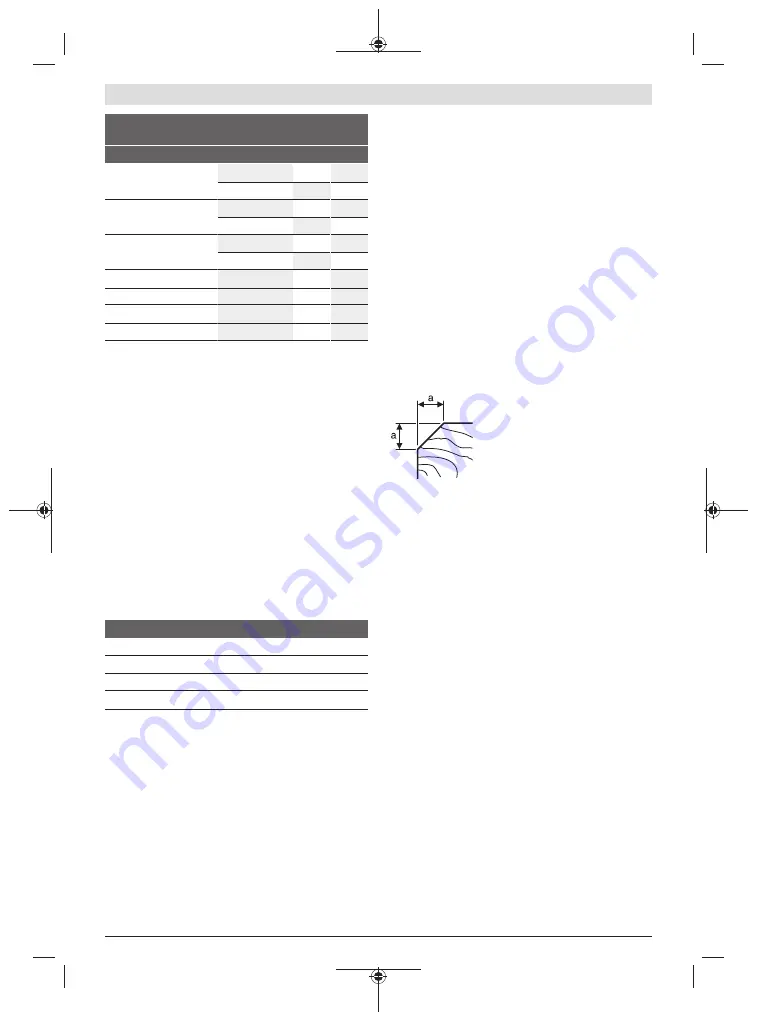
English |
17
Material
Planing width
in mm
Cutting depth
in mm
0–1.0 0–2.0
Plywood
< 20
●
●
20−30
●
−
Phenolic resin-coated
plywood
< 15
●
●
15−30
●
−
MDF sheets
< 20
●
●
20−30
●
−
Veneers
1
●
●
Hardwood veneers
3−5
●
●
Two-part filler
3−5
●
●
Cardboard
2
●
●
Start-up
Inserting the battery
Insert the charged battery
(5)
into the battery holder until it
is flush and you feel it engage.
Switching on/off
u
Make sure that you are able to press the On/Off switch
without releasing the handle.
To
start
the power tool,
first
press the lock-off button
(4)
,
then
press and hold the on/off switch
(4)
.
To
switch off
the power tool, release the on/off switch
(4)
.
Note:
For safety reasons, the on/off switch
(4)
cannot be
locked; it must remain pressed during the entire operation.
Battery charge-control indicator
When the on/off switch
(4)
is pressed in halfway or com-
pletely, the battery charge indicator
(10)
indicates the bat-
tery's state of charge for several seconds. The indicator con-
sists of three green LEDs.
LEDs
Capacity
3 × continuous green light
≥ 66%
2 × continuous green light
≥ 33%
1 × continuous green light
<33%
1 × flashing green light
Reserve
Temperature-dependent Overload Protection
In the event of an overload, the speed is reduced. Allow the
power tool to cool down unloaded at its maximum no-load
speed for approx. 30 seconds.
Practical advice
u
Remove the battery from the power tool before carry-
ing out work on the power tool (e.g. maintenance,
changing tool, etc.). The battery should also be re-
moved for transport and storage.
There is risk of injury
from unintentionally pressing the on/off switch.
Planing Procedure
Set the required cutting depth and attach the power tool
with the adjustable planer base plate
(14)
to the workpiece.
u
Only bring the power tool into contact with the work-
piece when switched on.
Otherwise there is danger of
kickback if the cutting tool jams in the workpiece.
Switch on the power tool and guide it over the surface of the
workpiece, applying uniform feed.
To achieve high-quality surfaces, apply only a low feed rate
and exert pressure on the middle of the planer base plate.
For the processing of hard materials, such as hardwood, and
also when utilising the maximum planing width, set only a
low cutting depth and reduce the planer feed as appropriate.
Excessive feed reduces the quality of the surface finish and
can lead to the chip ejector quickly becoming blocked.
Only sharp planer blades achieve good cutting performance
and make the power tool last longer.
Chamfering edges (see figure D)
The V-groove
(15)
in the front of the planer base plate en-
ables quick and easy chamfering of workpiece edges. Posi-
tion the planer with the V-groove onto the edge of the work-
piece and guide it along.
Groove used
Dimension a
(mm)
V-groove
2.1–5.0
Medium
0.0–2.8
Maintenance and Service
Maintenance and cleaning
u
Remove the battery from the power tool before carry-
ing out work on the power tool (e.g. maintenance,
changing tool, etc.). The battery should also be re-
moved for transport and storage.
There is risk of injury
from unintentionally pressing the on/off switch.
u
To ensure safe and efficient operation, always keep
the power tool and the ventilation slots clean.
Clean the power tool at regular intervals using compressed
air.
Keep the side cutter block guard
(8)
clear and clean it regu-
larly.
After-Sales Service and Application Service
Our after-sales service responds to your questions concern-
ing maintenance and repair of your product as well as spare
parts. You can find explosion drawings and information on
spare parts at:
www.bosch-pt.com
The Bosch product use advice team will be happy to help you
with any questions about our products and their accessor-
ies.
In all correspondence and spare parts orders, please always
include the 10‑digit article number given on the nameplate
of the product.
Great Britain
Robert Bosch Ltd. (B.S.C.)
P.O. Box 98
Bosch Power Tools
1 609 92A 4LD | (19.02.2019)































